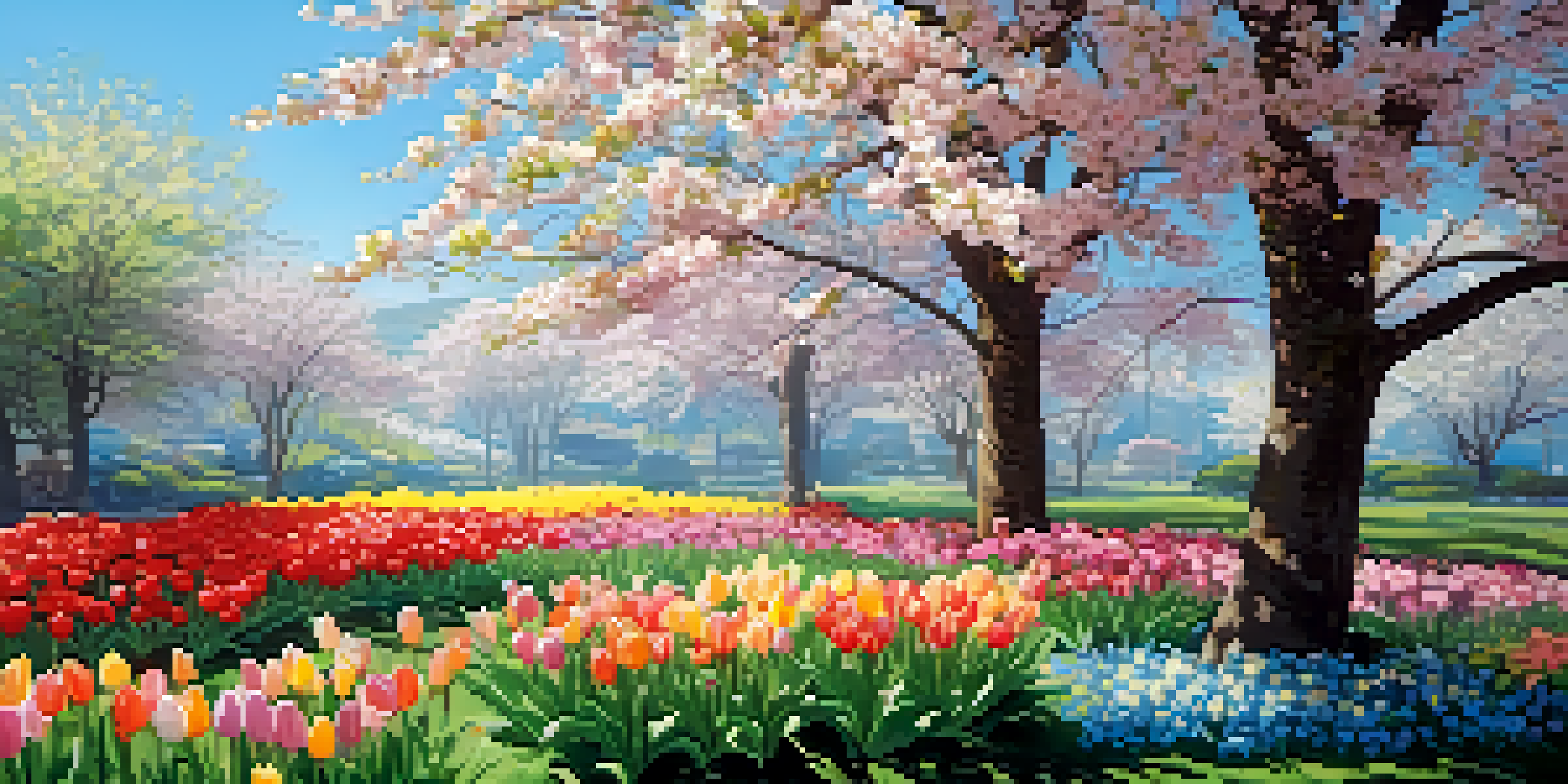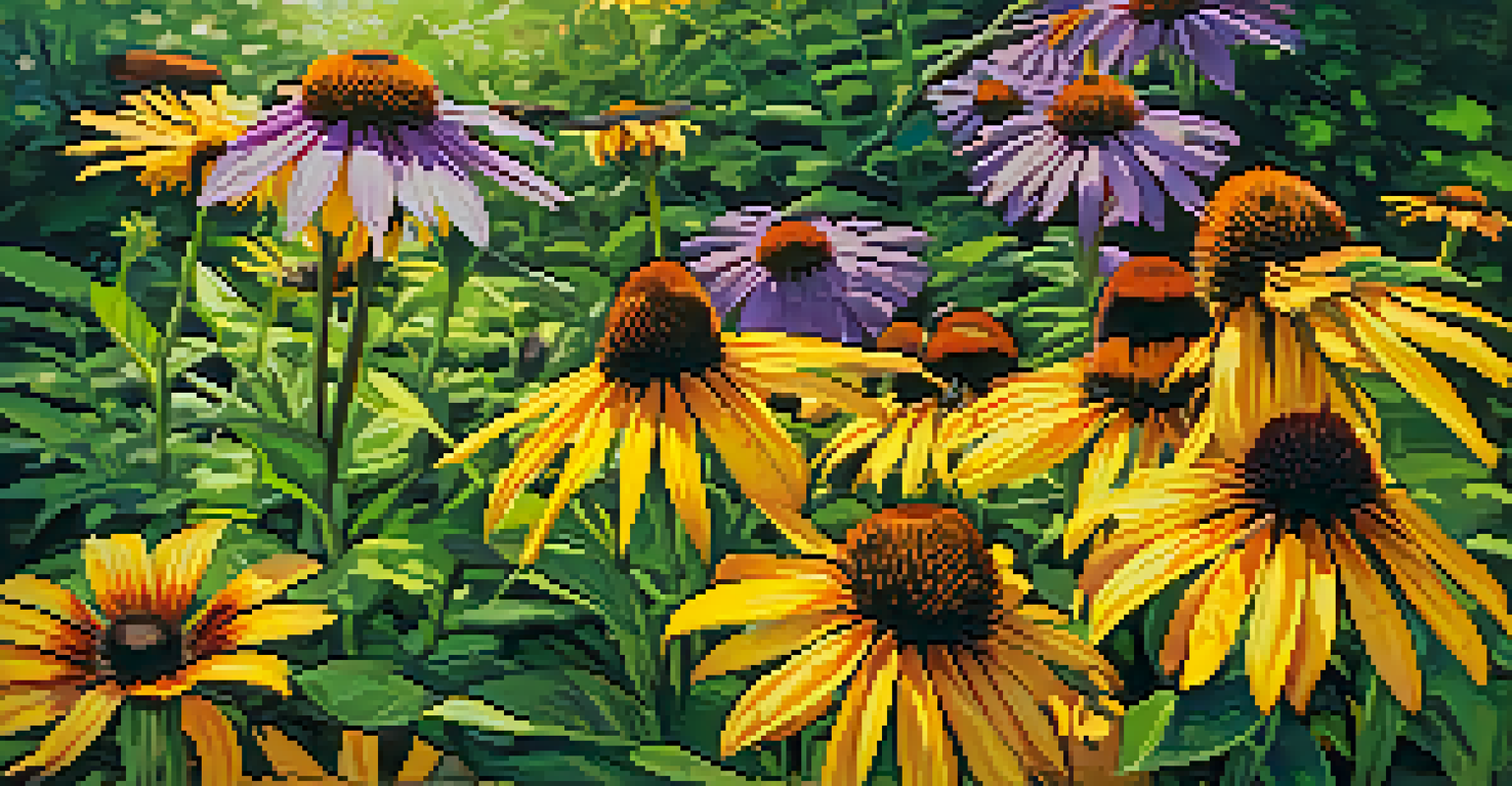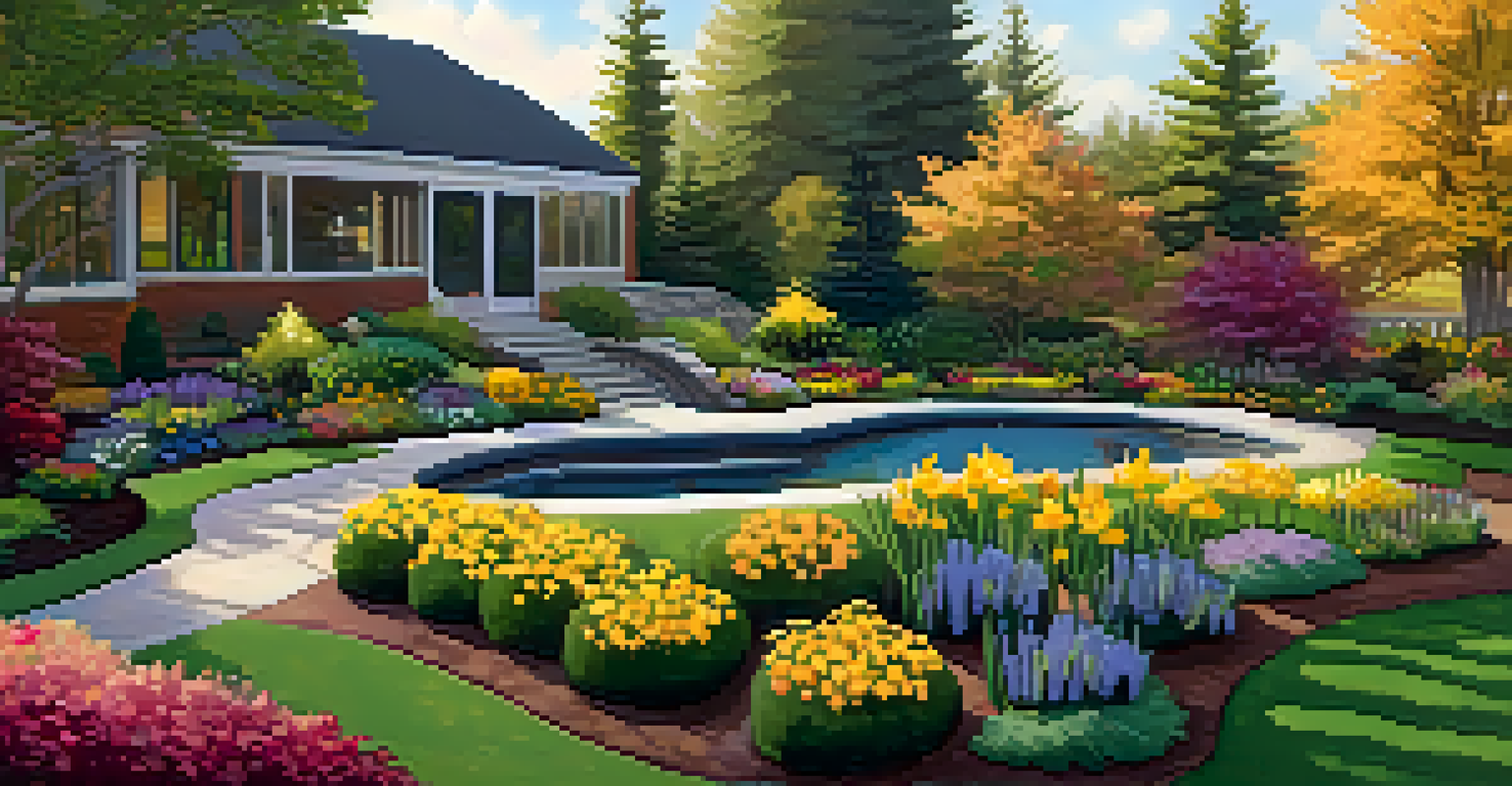Seasonal Blooming of Flowering Plants: Timing and Tips

Understanding Seasonal Blooming Patterns in Plants
Seasonal blooming refers to the specific times of the year when flowering plants reach their peak blooms. Many factors influence this timing, including climate, temperature, and the plant's natural cycle. For instance, spring-flowering plants like cherry blossoms usually bloom when temperatures begin to rise and daylight increases.
To plant a garden is to believe in tomorrow.
Different regions can experience varying bloom times due to local weather conditions. In warmer climates, certain plants may start blooming as early as February, while in colder areas, blooms might not appear until May. Understanding these variations can help you plan your garden more effectively.
By getting to know the seasonal patterns of the plants you love, you can ensure that your garden is in full bloom at the right time. This knowledge not only enhances the beauty of your garden but also supports local ecosystems by providing food for pollinators during critical periods.
The Importance of Correct Plant Selection
Choosing the right plants for your garden is crucial for ensuring a stunning display throughout the seasons. It's essential to select varieties that thrive in your specific climate zone. For instance, if you live in a cooler area, consider perennials like peonies that bloom beautifully in spring.

Additionally, understanding the bloom time of different plants helps create a staggered flowering effect. By mixing early, mid, and late bloomers, you can extend the visual interest in your garden from spring through fall. Think of it as composing a symphony where each flower plays its part at the right moment.
Timing Matters for Planting Success
Planting flowering plants at the right time of year ensures vibrant blooms, with spring and fall being optimal for different species.
Using native plants can also enhance your garden's aesthetic while supporting local wildlife. Native plants are adapted to the local environment and often require less maintenance, making them a smart choice for both novice and experienced gardeners.
Timing Your Planting for Optimal Blooms
Timing is everything when it comes to planting flowering plants. To enjoy vibrant blooms, it's essential to plant at the right time of year, typically in spring or fall, depending on the species. For example, spring-blooming bulbs such as tulips should be planted in the fall to establish roots before winter.
The earth laughs in flowers.
It's also important to consider the average frost dates in your area. Planting too early can expose young plants to frost damage, while planting too late may hinder their growth. Keeping an eye on local weather patterns can help you make informed planting decisions.
Using a planting calendar can be a helpful tool for gardeners. These calendars often outline the best planting times for various species, allowing you to plan ahead and ensure that your garden blooms in harmony with the seasons.
Essential Care Tips for Flowering Plants
Providing the right care is vital for healthy flowering plants. This includes proper watering, feeding, and pruning techniques. For example, many flowering plants benefit from a balanced fertilizer during their active growing season, which can promote abundant blooms.
Regularly checking for pests and diseases is also crucial. Early detection can prevent problems from escalating, ensuring your plants stay healthy and vibrant. A simple inspection can reveal signs of trouble before your flowers are affected.
Native Plants Support Local Ecosystems
Choosing native plants not only enhances your garden's beauty but also provides essential resources for local wildlife and requires less maintenance.
Additionally, deadheading—removing spent blooms—can encourage plants to produce more flowers. It's like giving your plants a little nudge to keep blooming, extending the flowering season and enhancing your garden's beauty.
Creating a Pollinator-Friendly Garden
A garden that attracts pollinators can significantly enhance the blooming experience. To create a pollinator-friendly environment, choose a variety of flowering plants that bloom at different times throughout the season. This ensures that there's always something in bloom to attract bees, butterflies, and other pollinators.
Incorporating native plants is particularly beneficial, as they provide essential food sources for local pollinators. Consider plants like coneflowers or black-eyed Susans, which are not only beautiful but also loved by butterflies and bees alike.
Additionally, avoid using pesticides that can harm these helpful creatures. Instead, focus on natural pest control methods, creating a harmonious environment where both your plants and pollinators can thrive.
Understanding Microclimates in Your Garden
Microclimates are small areas within your garden that have different climate conditions than the surrounding area. These can be influenced by factors such as sunlight, shade, wind, and moisture levels. Recognizing these microclimates can help you select the best plants for each spot in your garden.
For instance, a sunny corner may be perfect for heat-loving flowers like marigolds, while a shadier area might be suited for hostas or ferns. By tailoring your plant selection to these unique conditions, you can maximize the health and beauty of your garden.
Plan for Year-Round Blooming
Strategic selection of a mix of annuals, perennials, and bulbs allows for continuous blooms throughout the seasons, creating a dynamic garden landscape.
Monitoring how different areas of your garden respond to seasonal changes can provide valuable insights. Over time, you’ll learn which plants thrive where, allowing you to create a more cohesive and flourishing landscape.
Planning for a Year-Round Garden Experience
To enjoy a garden that blooms throughout the year, strategic planning is key. By selecting a mix of annuals, perennials, and bulbs, you can create a dynamic landscape that changes with each season. For example, spring bulbs can give way to summer annuals, followed by fall blooming perennials.
Incorporating evergreen plants can also add structure and greenery during the winter months. They serve as a backdrop to the seasonal bursts of color, ensuring your garden remains visually appealing year-round.

Finally, don’t forget about seasonal maintenance tasks. Regular weeding, mulching, and seasonal pruning will keep your garden healthy and vibrant, allowing you to enjoy the fruits of your labor no matter the season.